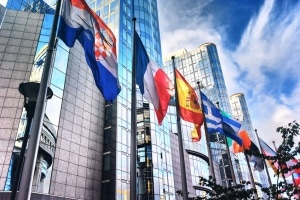The research partnership within the Horizon Europe programme has a budget of €55,3B. The European Commission estimates that billions of euros are successfully coping with the tasks set in the EU’s green, digital, and health areas.
Forty-nine research partnerships unite industry, members of the European Union, and various research organizations. Such a system helps avoid duplication of research projects and achieve the tasks set more effectively.
The first results, which the European Commission summed up, showed that the current Horizon Europe program has more significant potential in contributing resources to the EU’s policy objectives in comparison with 110-odd predecessors within the seven-year Horizon 2020 programme.
In particular areas, these resources’ contribution looks as follows:
- 67%- for green deal R&D
- 36%-health area
- 35%-digital area
Moreover, European Commission is seeing positive growth in all research areas compared to Horizon 2020. The increased financial investments are also worth noting: member states and industry contributed €31,4 billion to the partnerships and €23,9 billion contributions from the €95,5 billion from Horizon Europe programme funding.
There are also positive trends in developing partnerships with the European countries that have not been actively participating in their initiatives. Hungary, Bulgaria, Latvia, and Luxembourg are among such states as potential partners. Also, the programme participants consider not only European countries as potential partners but also Brazil, Canada, China, Chile, India, and the US.
In total, three types of partnerships unite representatives of industry and member states in various formats. These partnership formats have been launched one by one in the past year in strategic areas from biodiversity to AI and robotics.
The first assessment report serves as a guide for industry and member states across the following indicators:
- additionality and directionality,
- coherence and synergies,
- openness and transparency,
- international visibility.
Olivier Bouc, coordinator of the Water4All partnership: “Now we’re seeing where we are heading to, what data we need to record or collect, so that will ease the process and strengthen the evaluation later on.”
The next similar report will be published in 2 years.
Read more
Source: Goda Naujokaitytė
Picture: Pexels



